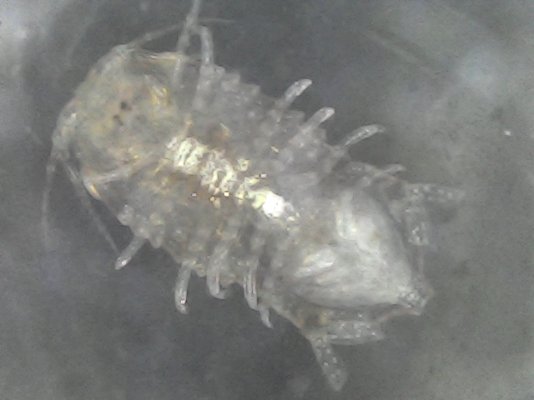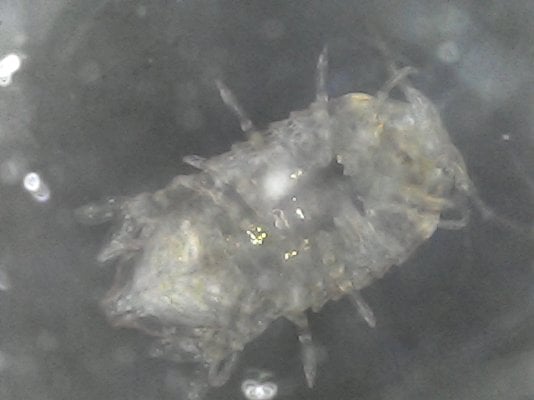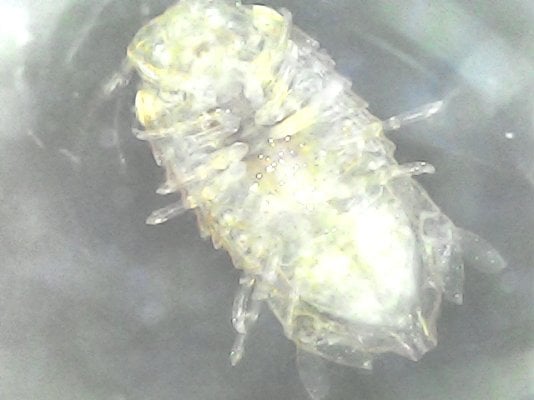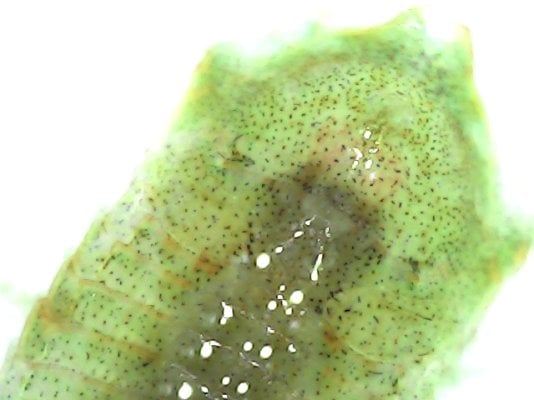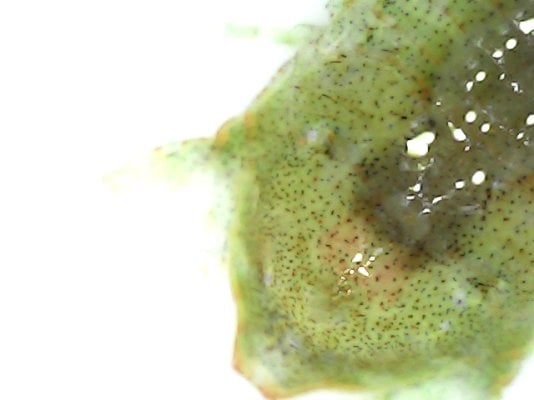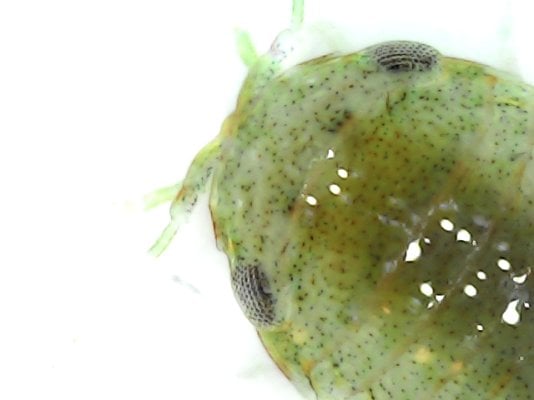New to the Forum.
About 2 months ago I bought some Cheato from Algae Barn. Since then it has been in a newly-established quarantine tank, which contains nothing but water, the Chaeto, and the usual aquarium equipment. No substrate, nothing else. I now have hundreds of little isopods in the tank, that seem to be scavenging on the Chaeto and the aquarium walls.
I have tried to ID these, but can't determine if they are Sphaeromatid, Cirolanid, or something else. On the one hand they LOOK like female Sphaeromatids, with body shape and the small eyes set to the side - and they are thriving on scavenging a tank with zero prey animals. On the other hand of the dozen or two I have examined I have not spotted a single one that looks like a male Sphaeromatid, I have not been able to induce one to curl up into a ball, and they have visible antenae.
Most of the individuals are quite small, like the example in the grid photo (0.1 mm grid spacing) but there are several about twice that size - like the one in the clearer photo.
Before I put the Chaeto in my refugium I would like to be reasonably assured that I did not just turn my fish into isopod food, rather than the other way around. Any help resolving this issue would be greatly appreciated.
Thanks
Erik White
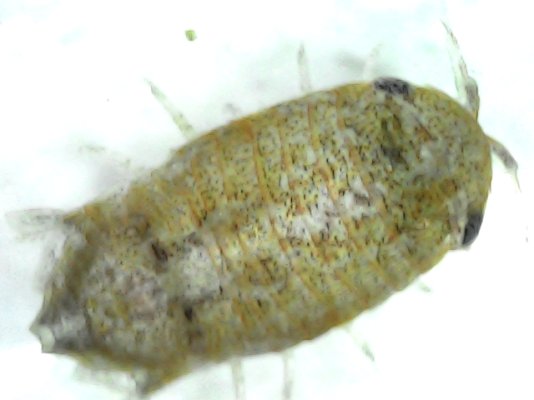

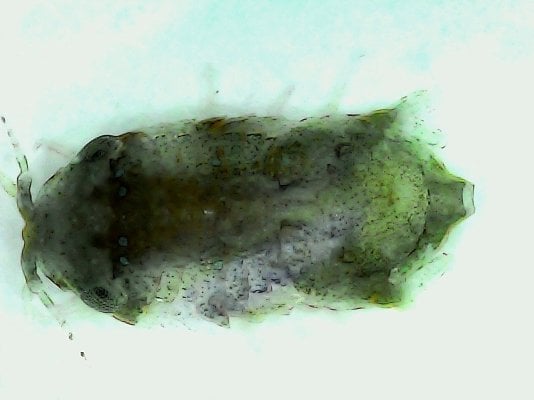
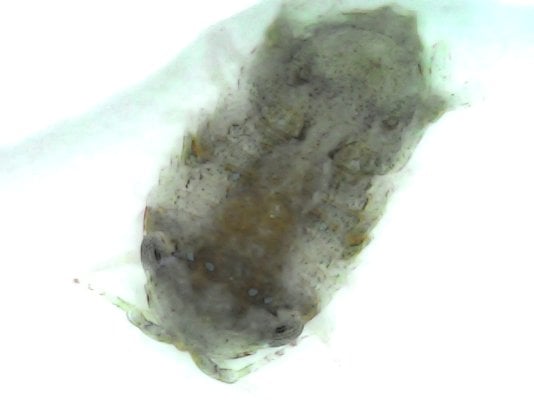
About 2 months ago I bought some Cheato from Algae Barn. Since then it has been in a newly-established quarantine tank, which contains nothing but water, the Chaeto, and the usual aquarium equipment. No substrate, nothing else. I now have hundreds of little isopods in the tank, that seem to be scavenging on the Chaeto and the aquarium walls.
I have tried to ID these, but can't determine if they are Sphaeromatid, Cirolanid, or something else. On the one hand they LOOK like female Sphaeromatids, with body shape and the small eyes set to the side - and they are thriving on scavenging a tank with zero prey animals. On the other hand of the dozen or two I have examined I have not spotted a single one that looks like a male Sphaeromatid, I have not been able to induce one to curl up into a ball, and they have visible antenae.
Most of the individuals are quite small, like the example in the grid photo (0.1 mm grid spacing) but there are several about twice that size - like the one in the clearer photo.
Before I put the Chaeto in my refugium I would like to be reasonably assured that I did not just turn my fish into isopod food, rather than the other way around. Any help resolving this issue would be greatly appreciated.
Thanks
Erik White











